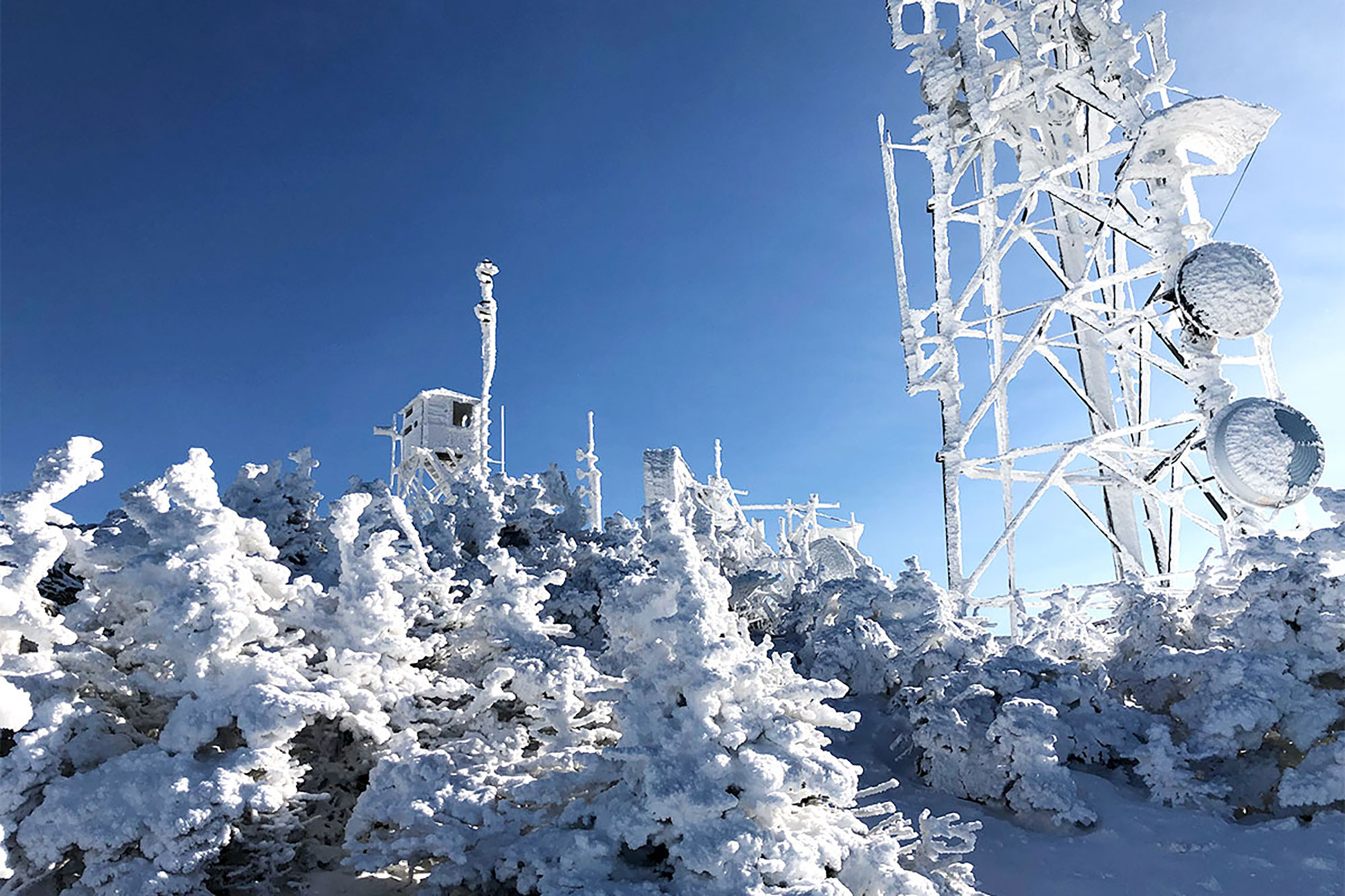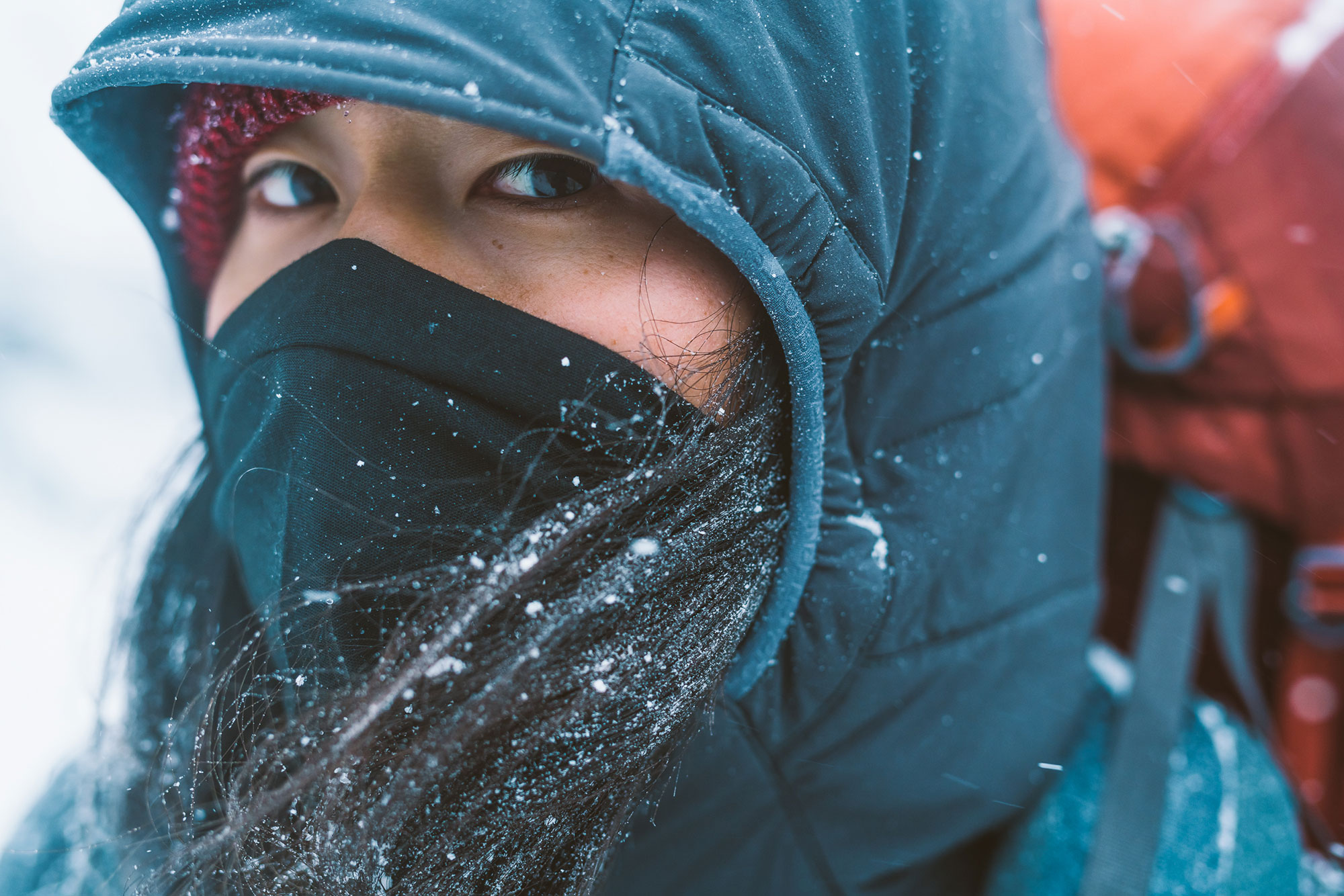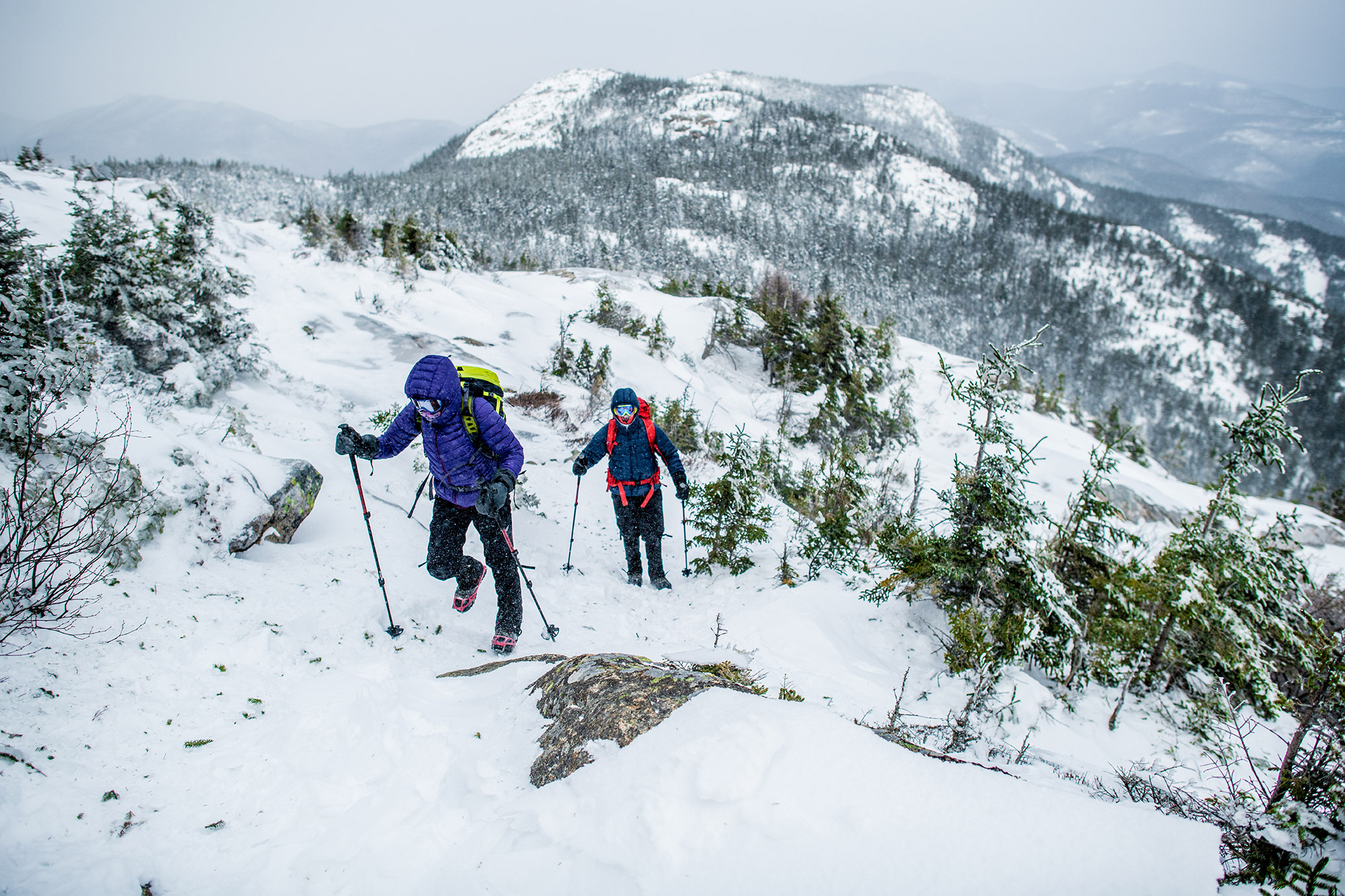Shorter days, colder temperatures, and the possibility for wicked weather are all factors to be considered when getting outside in the winter time. The winter wind is one such factor that, if unaccounted for, can sour even the bluest of bluebird days. Here are some tips to help keep you warm when the temps are down and the wind is up.

Be Prepared
The first and best thing to do when considering a winter excursion is to be prepared. Local weather and trail conditions reports are critical, as is understanding how the wind—and the windchill factor—can affect temperatures. One useful tool is the National Weather Service’s Wind Chill Chart, which uses sustained wind speed and temperature to calculate the amount of time skin can be exposed before frostbite begins to set in. This is super important, especially for those fast-and-light, alpine-style objectives, where spartan packing lists may cause an important item to eschewed for the sake of weight.
Cover Up
Exposed skin is the most vulnerable to frostbite when the windchill index dips down—so cover it up! Boots, pants and jackets are obvious but make sure to also wear gloves and a hat. A good balaclava or neck gaiter are also essential to protecting your face, which is almost always exposed in other circumstances. Ski goggles, in addition to keeping your eyes out of the wind, limit exposure as well.
Pack Hand Warmers and Start Them Early
As the body cools, circulation slows, and the extremities—starting with fingers and toes—become extremely susceptible to freezing. Nip this in the bud at the trailhead by stuffing your gloves and boots with hand warmers. Do yourself a double favor by packing extra gloves and socks and stuffing them with activated hand warmers from the get-go. Should you wind up losing a glove or getting your socks soaked, you’ll have warm replacements ready to go.

Layers on Layers
Layering is always important while traveling in the mountains but when the wind is up, it’s doubly so. A wicking base layer will keep you dry while an insulating mid-layer will help trap your body heat. On top of those as an outer-most layer—while moving, at least—should be a waterproof, windproof, hardshell jacket. Hardshell jackets are designed specifically for conditions like the biting winter wind—they tend to be lightweight and packable too, so they’re not too much to throw into a pack until you need it. Finally, have a packable insulated jacket to pop over everything else to keep that heat in on breaks. As an added bonus, the air trapped between each layer also acts as additional insulation.
Eat and Hydrate Well
Before heading out into the cold, fuel up with a big meal. It’s more energy to keep you moving and digestion helps bring the body temperature up. While you’re out, keep hydrating—it’ll encourage circulation and spread the warmth to vulnerable extremities.
Warm Up from the Inside-out
Warm up from the inside-out by carrying an insulated thermos full of something hot. A little coffee, tea, or plain-old hot water can make a huge difference, raising core temperatures and spirits alike in the coldest of conditions. Alcohol, despite it’s common renown for cutting the cold, is best avoided when the windchill factor is severe as it actually causes the body to lose heat faster—so save it for the aprés.

Stay in the Lee of the Wind
When the wind is really bad, do what you can to stay out of it. In most cases this is as simple as staying in the woods but above treeline it means being strategic about route selection and where to take your breaks. Use natural and artificial features like boulders and cairns to catch your breath—the relief of even a minute spent out of the wind can make all the difference, mentally as well as physically.
Keep it Moving
The best way to combat frostbite when the windchill factor is high is to keep moving. Aerobic activity keeps the heart rate up, increasing circulation and spreading critical warmth to vulnerable fingers and toes. Remember to capture that body heat and keep your core temperature up while resting by throwing on an additional insulated layer.
John Lepak
John Lepak is an art director, graphic designer, and weekend mountaineer. He hasn’t met a rock scramble he didn’t like, and spends his free time either in the mountains or obsessively cooking Mexican food. When John isn’t pushing pixels, crushing miles, or making the best carnitas caseras you’ve ever tasted, you can find him living the dream in the Connecticut woods with his family. Follow him at @jhlepak.
Related Posts
April 2, 2024
10 Tips for Mountain Biking Etiquette During Mud Season
One rough spring could ruin the…




